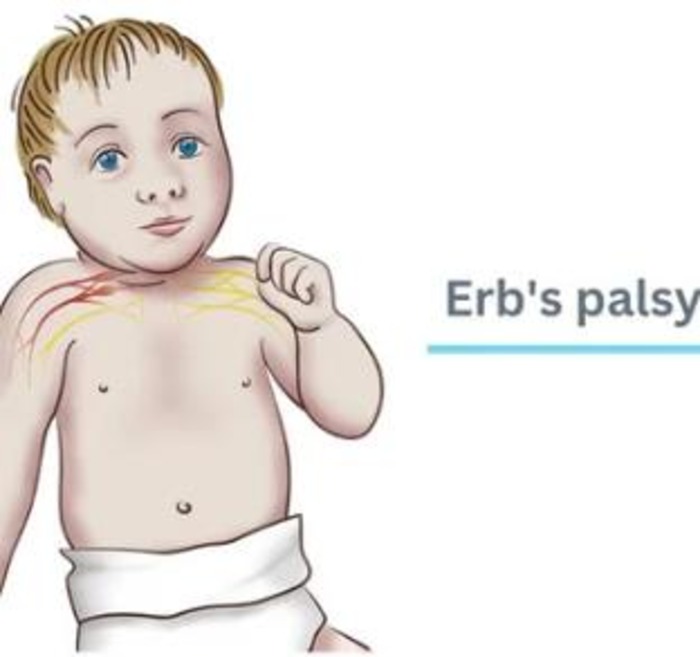Erb’s palsy is one of the serious health conditions that is most common in infants. Taking care of a child with Erb’s palsy can feel overwhelming at first. But with the proper knowledge and support, it gets easier. This blog will explain what Erb’s palsy is and how to take care of a child with Erb’s palsy.
What is Erb’s Palsy?
Erb’s palsy is an injury that affects the nerves in the upper arm. It often happens during childbirth when the baby’s shoulder gets stuck in the birth canal. Doctors may need to pull or twist the baby’s neck and shoulder, which can stretch or tear the nerves. Sometimes, mishandling of forceps during C-section can also be the cause.
How to Know If Your Child Has It
Weak arms, which the baby might not move, the arm that stays bent at the elbow and turned toward the body, poor grip, or weak muscles are the common symptoms of Erb’s palsy. If you don’t know whether your child has the condition, get help from a good medical professional and treat them early.
Doctors use physical exams and imaging tests, such as MRIs or EMGs, to check the nerves and muscles. It’s best to get help early, as this gives your child the best chance of improving with treatment. Some babies recover fully, while others may need long-term care.
What Treatments Are Available?
Physical Therapy
This is one of the first steps in treating Erb’s palsy. A physical therapist can teach you simple exercises to help your child move their arm. These movements keep the joints flexible and prevent stiffness. Start physical therapy as soon as possible. Even small daily stretches can make a big difference.
Occupational Therapy
Occupational therapy helps your child use their arm in everyday tasks. A therapist might use toys, games, and daily routines to build strength and skill. This also allows your child to gain confidence.
Surgery
Some children may need surgery if the injury is more serious. Doctors can repair torn nerves or move tendons to improve movement. Surgery is often done when little progress is made after 6 to 12 months of therapy.
Other Options
Some families try massage or water therapy. These can help the child relax and move more freely. Always talk to your doctor first before adding new treatments.
How to Help at Home
You can do a lot each day to help your child grow and thrive.
- Support the weak arm during dressing, play, and feeding.
- Do the exercises your therapist recommends.
- Avoid lifting the child under the arms. It can make the injury worse.
- Choose loose-fitting clothes that are easy to put on and take off.
- Give lots of encouragement. Praise your child for using the affected arm, even in small ways.
Your home can be an excellent place for healing. Keep a routine. Make therapy part of playtime. Stay patient—progress takes time.
Support for Emotions and Learning
Living with Erb’s palsy is not just about the physical side. Children may feel different or frustrated, especially when starting school.
Here’s how you can support their emotional and social growth:
- Let them know their feelings are okay.
- Help them join games or sports where they can participate safely.
- Talk with teachers so they understand what your child needs.
- Encourage friendships and group play.
Schools can offer special plans like IEPs (Individualized Education Plans) if needed. These plans support your child’s learning and play with others.
What Happens in the Long Run?
Many children recover fully with therapy. Others may have long-term weaknesses but still live their whole lives. As your child grows, they will find new ways to do things and stay active.
You may need to adjust care as your child gets older. Keep working with doctors and therapists to find what works best.
Could It Have Been Prevented?
Sometimes, Erb’s palsy happens because of how the birth was handled. If the healthcare professional is negligent during delivery, it may be a reason for the injury. If you feel medical negligence is the reason for your child’s condition, speak to a legal professional to hold the responsible party accountable.
Caring for a child with Erb’s palsy takes time, love, and patience. With early help, firm support, and the proper care, your child has a bright future.


